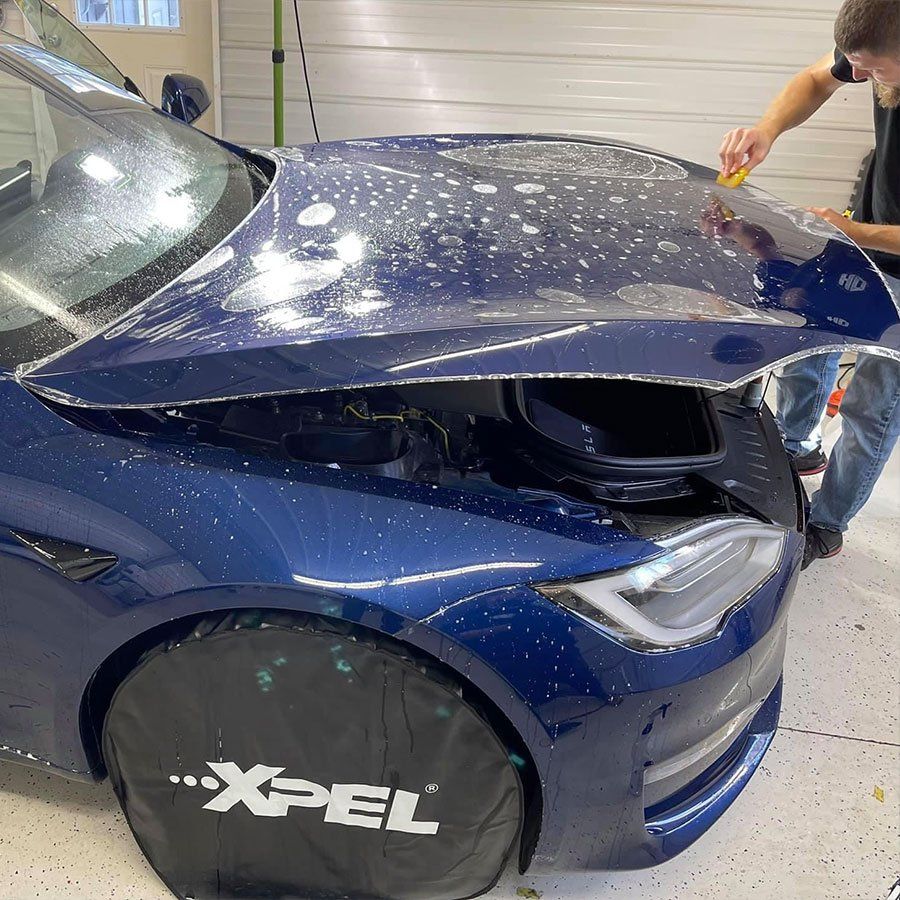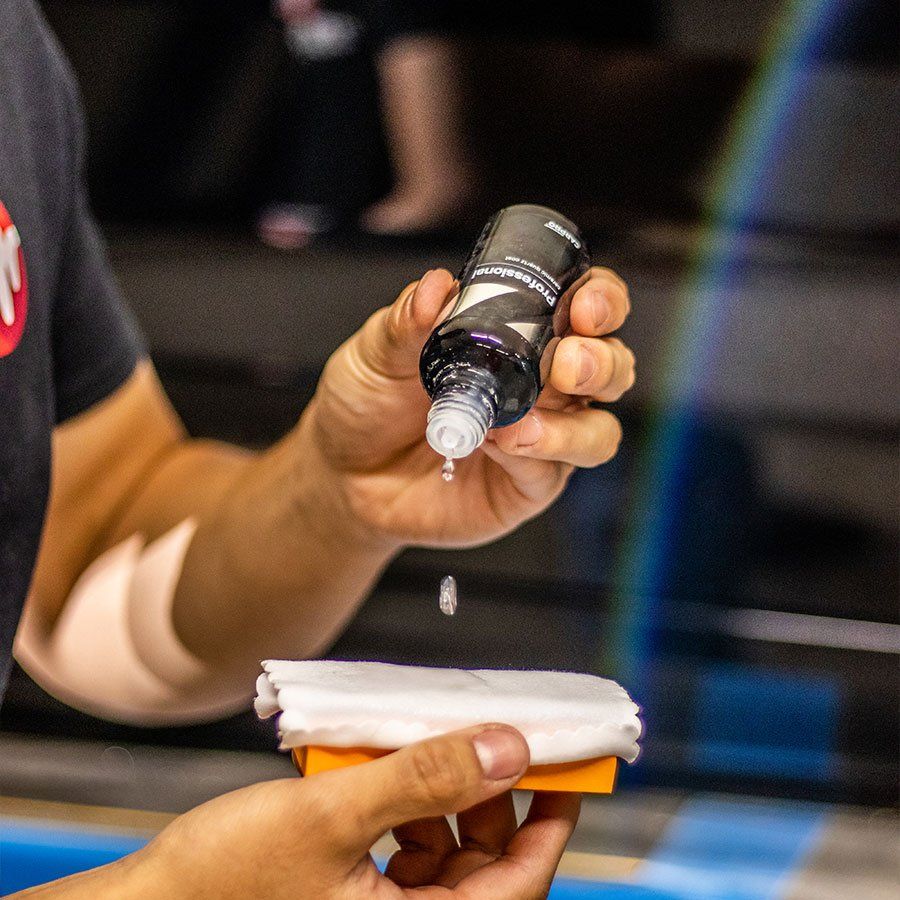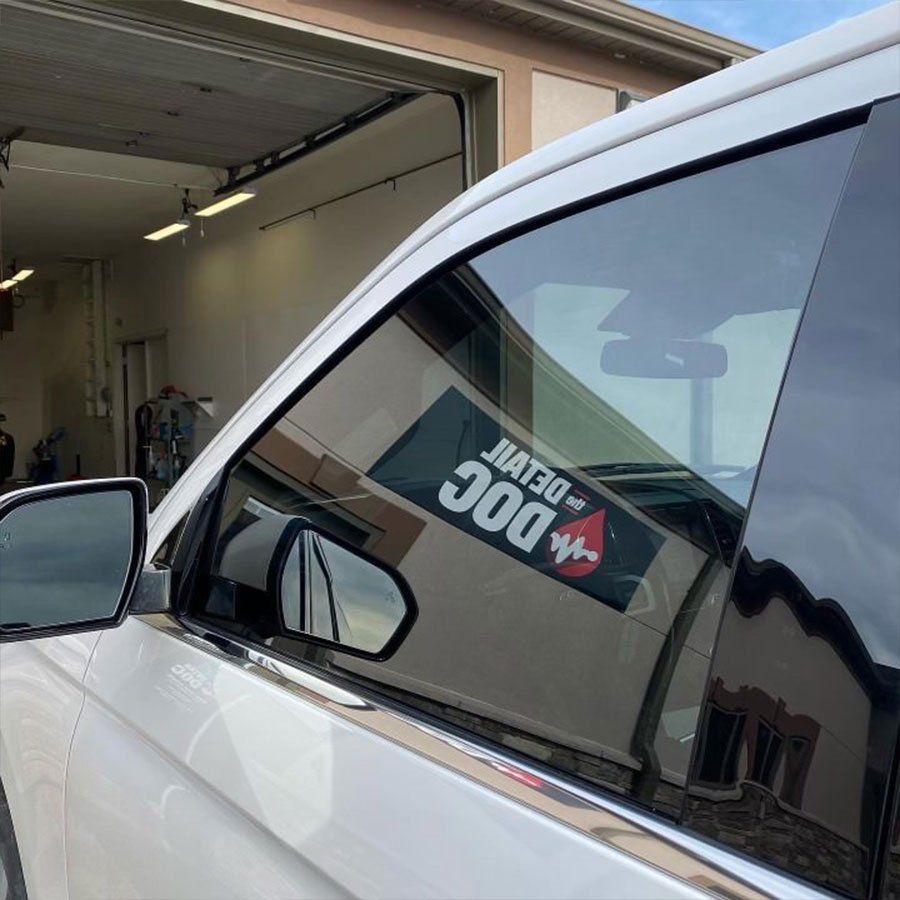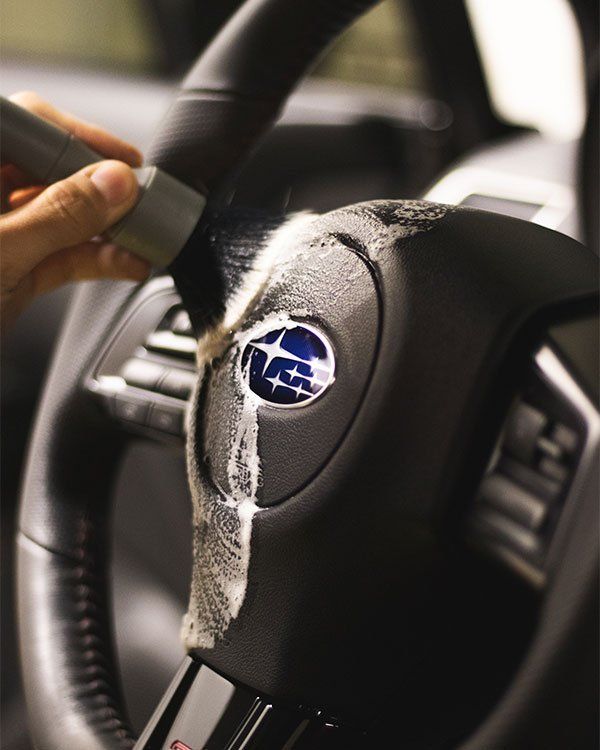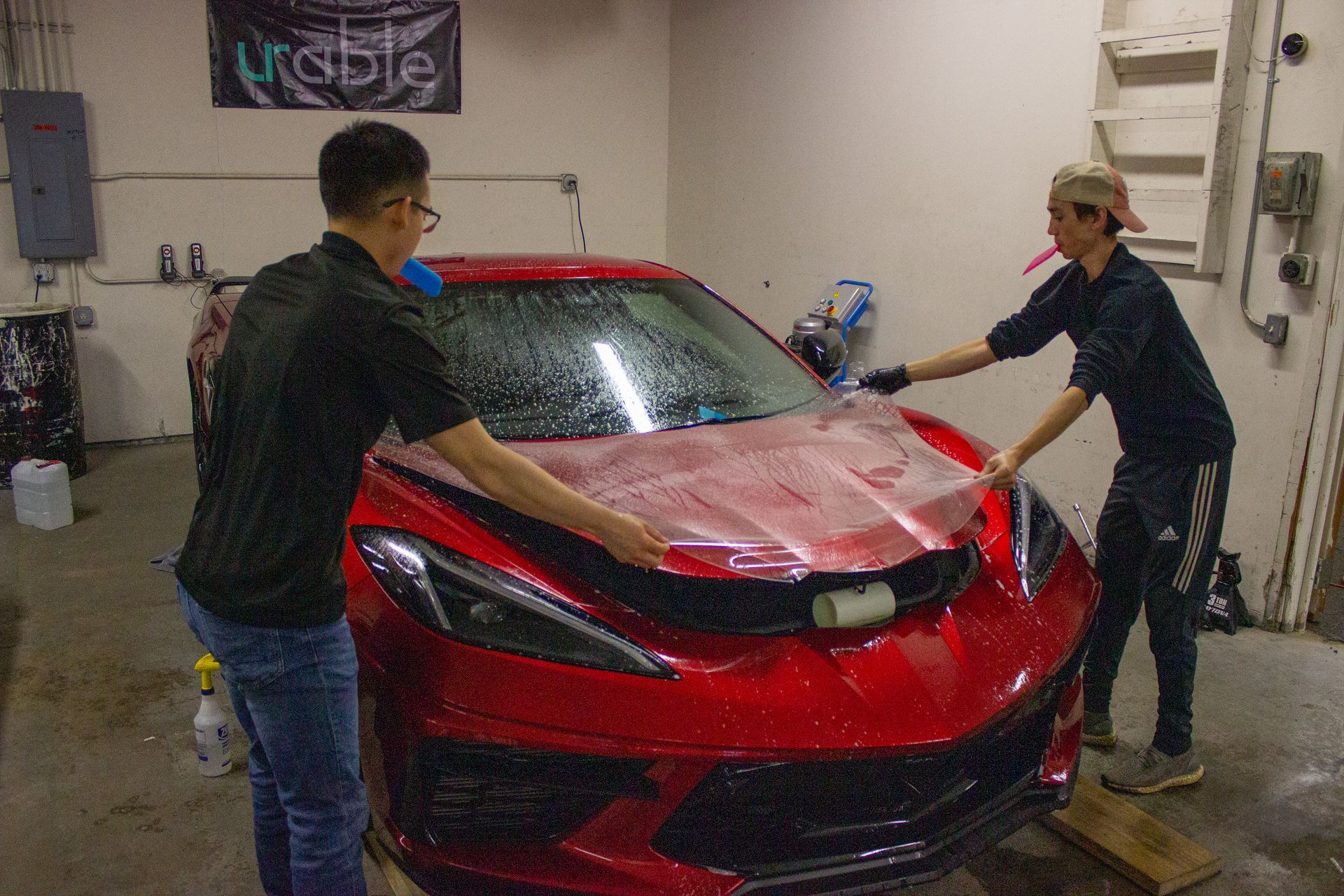The Detail Doc Blog
What Happens If It Rains After Having a Ceramic Coating Installed? Effects and Solutions
(989) 244-0505 GET SCHEDULED NOWSo, you’ve just had a
ceramic coating applied, and now you're staring at those ominous clouds in the sky. Understandably, you're worried that rain might undo all the hard work and money you’ve invested. Ceramic coatings like those from Gtechniq are designed to ward off water with their impressive hydrophobic qualities; they make water beads up and slide right off your car’s surface. However, there's an important detail that even the most seasoned car enthusiast might overlook.
The twist lies in timing—specifically, the critical 24-48 hour window after the installation. During this period, the coating is curing and forming a strong bond with your vehicle’s paintwork. Exposure to rain at this stage can disrupt this process, possibly compromising performance and longevity. This is why understanding both the benefits and potential pitfalls of your newly installed ceramic coating is essential for ensuring its durability. In this blog post, we will discuss what happens if it rains after having a ceramic coating installed!
Are Ceramic Coatings Waterproof?
Ceramic coatings have earned widespread acclaim for their water-repellent properties. When it comes to waterproofing specifically, it's essential to understand what this signifies. The hydrophobic nature of ceramic coatings is an incredible feature that makes them highly resistant to water and its potential damage.
The hydrophobic effect essentially refers to the way these coatings interact with water. Imagine a freshly waxed car or a sleek surface where water beads up and rolls away easily. That's the basic premise of how ceramic coatings work. These specialized coatings are so effective at repelling water that they soak up and glide off the surface, taking any dirt and contaminants with it. This is an ideal scenario, as it reduces water spots, minimizes residue buildup, and significantly lowers the potential for water damage.
To achieve this impressive level of hydrophobia, ceramic coatings use nano-ceramic particles to create a protective barrier, which is what makes them essentially waterproof. This means they can effectively shield your vehicle from various types of water damage—whether it's from heavy rain, snow, or even splashes from driving through puddles.
An efficient comparison would be thinking of ceramic coatings as creating a shield around your vehicle that repels water like a force field, keeping your car's paint safe from moisture and all the issues associated with it.
So, while "waterproof" may not mean that this coating allows your vehicle to be submerged underwater without affecting it in any way, it does indicate that the nano-ceramic coating provides a high level of water resistance against everyday conditions your vehicle encounters.
The hydrophobic nature of ceramic coatings makes them practically impervious to water-related damage, providing lasting protection against rain and its potential adverse effects on your vehicle.
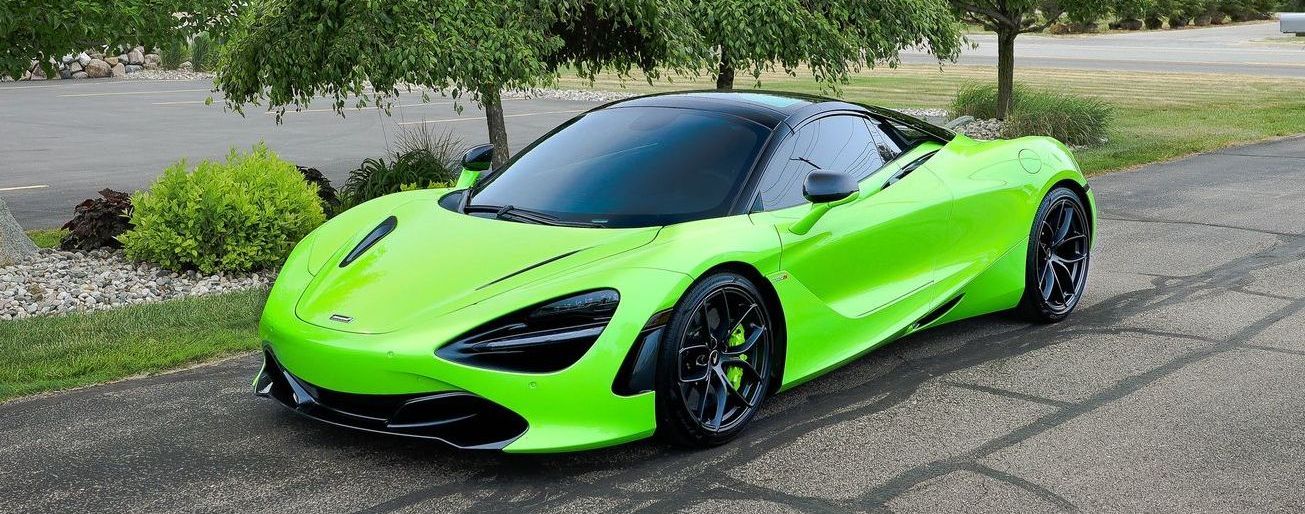
Possible Drawbacks of Rain Exposure
You've just had a slick new ceramic coating applied to your vehicle, and wham! It starts raining. You might be wondering, "What's the big deal anyway?" Ceramic coatings, known for their robustness, are somewhat vulnerable during the initial curing period. Within the first 24-48 hours post-application, the coating is in a delicate stage of bonding with the paintwork. Rain, being an unexpected guest during this time, can interrupt the crucial curing process and compromise the coating's efficacy.
What happens here is that premature contact with rainwater can prevent the coating from forming a strong and durable bond with your vehicle's surface. As a result, this incomplete bonding may have significant consequences for the protection and longevity provided by the ceramic coating. If you want your investment in ceramic coating to pay off, you'll need to take extra care in protecting it during these initial hours, as they set the foundation for how well it performs throughout its life.
The good news is that all hope is not lost. There are proactive measures that can salvage the situation. One such measure is to keep your freshly coated vehicle under cover—be it in a garage, carport, or any sheltered area—while it cures. In circumstances where covering isn't feasible (or practical), another viable option is to use an umbrella over your vehicle when parked outside to shield it from unexpected rain showers.
Be vigilant about checking weather forecasts before scheduling your ceramic coating application appointment to minimize the risk of rain impacting the process soon after completion. A little bit of planning can go a long way in preventing unwanted complications and ensuring your ceramic coating sets in without any hiccups.
Changes in Appearance
Imagine that your vehicle has recently undergone a fresh ceramic coating treatment to give it that stunning, glossy shine. Yet, a sudden downpour can sometimes lead to water spots forming on the coating surface. This might seem concerning, but it's actually a temporary issue.
When rain comes into contact with your freshly coated vehicle, you might notice some small water spots appearing on the surface. In most cases, these imperfections will vanish after your next thorough cleaning session. The hydrophobic properties of ceramic coatings are specifically designed to repel water effectively, preventing it from penetrating the coating itself. This means that any water spots that appear should be superficial and easily removable with proper maintenance.
For instance, rainwater will bead up on the surface of the ceramic coating instead of spreading out, showcasing its ability to repel liquids. However, during prolonged rainfall or particularly heavy downpours, some water droplets may be left behind as they eventually evaporate or dry up. This process might leave behind small spots that can make the coated surface look uneven.
Just keep calm when you see these water spots after rain. Understand that addressing them promptly during your next cleaning session will ensure that your ceramic-coated surface maintains its flawless finish.
Surface Damage Concerns
There's a common belief that a bit of downpour can significantly harm a ceramic-coated surface, causing panic at the thought of rainfall. However, the reality is far less dire than what this misconception leads many to believe. A well-applied ceramic coating provides durability against most weather elements, including light rain.
Yet, here's where things get tricky: certain environmental factors, such as pollutants or acid rain, can pose a potential threat if left unattended over time. When mixed with these elements, rainwater could lead to subtle etching on the ceramic coating. But here's the reassuring part - it's not irreversible.
If you adopt simple but consistent measures in your maintenance routine, such minor concerns are easily manageable. Regular rinsing off of accumulated rainwater essentially interrupts any potential risk before it even gets the chance to develop into noticeable damage.
By taking this proactive approach, you're ensuring that your beautifully coated vehicle maintains its pristine look and continues to stand strong against the elements. Remember, just like caring for any other investment, providing attention when needed makes all the difference in maintaining its value and longevity.
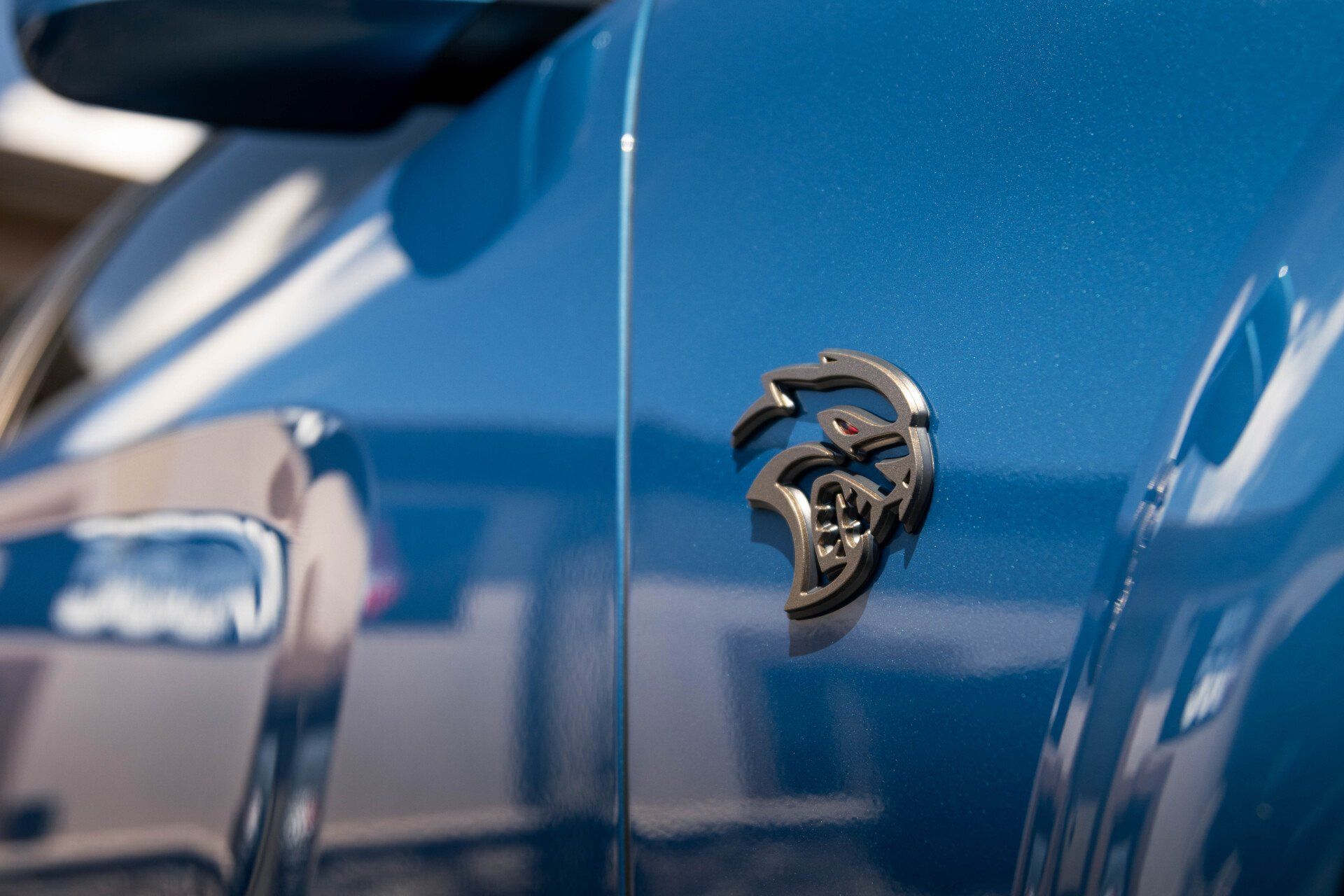
Immediate Steps After Rain Contact
When rain falls on a freshly ceramic-coated vehicle, there's no need to panic. While concerns may arise about water spots and potential imperfections, taking immediate action is your best approach to maintaining the integrity of the coating. Let's cover the steps you should take to address these issues.
Step I - Rinse with Clean Water
The first and foremost step is to rinse your vehicle with clean water to eliminate any contaminants left behind by the rain. It's crucial to use a hose with a gentle spray setting to avoid disturbing the ceramic coating. The aim is to remove any residue that could lead to water spots or other blemishes on the coating. A thorough rinse clears debris before drying and inspection.
Step II - Dry Thoroughly
After rinsing, the next step involves thoroughly drying the surface using a microfiber towel. This prevents any remaining water from creating unsightly water spots. When drying, it's important to gently pat rather than rub the surface to evade potential smudging. Employing a high-quality microfiber towel ensures an effective and streak-free drying process, preserving the glossy finish while protecting the coating.
Step III - Inspect for Imperfections
Once dry, it's crucial to inspect for any spots or marks that rain exposure might have caused. This involves searching for water spots, mineral deposits, or any areas where the rain may have negatively impacted the appearance of the coating. Minor spots can often be cleaned off with a detailing spray and a clean microfiber cloth.
Meticulously inspecting the entire vehicle enables you to spot and correct imperfections while they're still small and manageable.
Taking these immediate steps helps maintain the condition of your ceramic coating after rain exposure. Not letting water spots or contaminants sit on the coating for long is essential, as they may cause more resistant stains over time if not addressed promptly.
By following these steps diligently, you can minimize the impact of rain on your ceramic coating and keep your vehicle looking its best. Immediate action goes a long way in preserving the durability and aesthetics of your ceramic-coated vehicle, ensuring that it continues to shine bright even after exposure to adverse weather conditions.
Safeguarding your car against unexpected elements isn't solely about reactive measures; practicing effective aftercare routines can significantly prolong the longevity of your ceramic coating. Let's dive into some practical strategies for maintaining that just-detailed appearance.
Protect Your Investment with Proper Ceramic Coating Installation and Curing
Installing a ceramic coating on your vehicle is an investment in both its long-term protection and aesthetic appeal. However, making sure that it cures properly after installation is essential for optimal results; raindrops immediately after application could compromise its effectiveness and compromise its longevity.
At The Detail Doc, our focus is to ensure the correct curing of ceramic coatings. Our team ensures your car remains in an ambient setting free from excessive sun or rain to allow the coating to bond effectively. In addition, we provide comprehensive aftercare instructions and support so you can maintain a pristine condition for years.
Trust The Detail Doc to take every step in the ceramic coating process with extreme care and professionalism.
Reach out today and schedule your installation so we can protect your investment for years to come!

